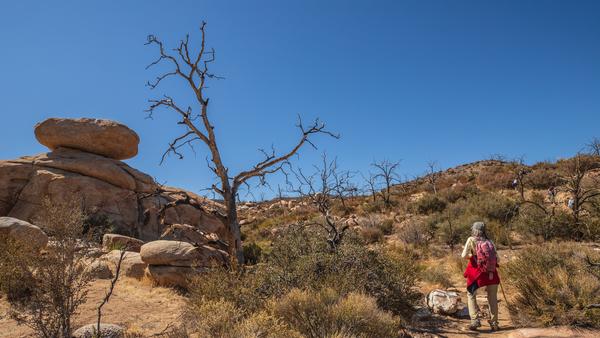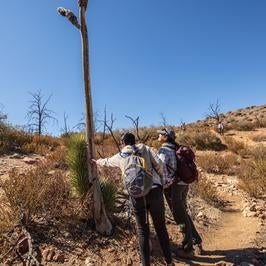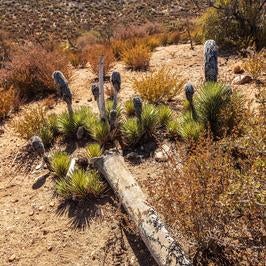Transitions
“The diversity of the phenomena of nature is so great, and the treasures hidden in the heavens so rich, precisely in order that the human mind shall never be lacking in fresh nourishment." — Johannes Kepler
You may have heard of C. Hart Merriam as one of our local chipmunks (Tamias merriami), a kangaroo rat (Dipodomys merriami), and a lizard found in southern Texas and then into Mexico (Sceloporus merriami) were among the many species named in his honor.
In 1889, Merriam described distribution patterns of vegetation from the lower elevations of the Grand Canyon to the top of the San Francisco Peaks (the jagged edge of a collapsed, dormant volcano near Flagstaff, Arizona, that once may have reached an elevation of nearly 16,000’, but today reaches a mere 12,760’). Based on his observations, Merriam developed a concept of a Life Zone, an idea that he likely borrowed from Alexander von Humboldt, who developed a similar idea nearly a century earlier. In a nutshell, the life zone idea is that by climbing higher in elevation on a mountain you are traversing vegetation patterns that would otherwise only be apparent by a lengthy transect across latitudes heading north toward the arctic circle.
Merriam’s life zones began at the bottom of the mountain, the “Lower Sonoran Zone,” characterized by what we all would call a desert. Above that was the “Upper Sonoran Zone,” comprised of chaparral and pinyon-juniper vegetation types. Then was his “Transition Zone,” where you could find Ponderosa Pine forests. Next in the sequence was the “Canadian Zone,” where Douglas fir and quaking aspen grew. Then came the “Hudsonian Zone," home of bristlecone pines and spruces. Finally, at the top was the “Alpine Zone,” a tundra-like expanse where no trees could grow, just lichens and mosses.
Initially Merriam’s zones were embraced by naturalists and ecologists as a simple way of understanding the influences of temperature on what could grow and where you could look for particular plant species. In some ways it did reflect that south to north, from the southwestern U.S. to the arctic circle. During the multiple glacial maxima during the Pleistocene Era the ebb and flow of great sheets of ice pushed those northern plants south into climate refugia. Then, when the glaciers receded, those plants moved back north, except some climbed the mountains where they could still find their preferred climates even as the lower elevations became increasing hotter and drier. Today, Merriam’s life zones have lost favor, being viewed as overly simplistic explanations for what are in fact complex interactions between climate, topography, soils, ground water, and vegetation.
The names for Merriam’s life zone generally followed regions of North America where those vegetation types could be found. Except Merriam got it wrong when naming the “Transition Zone." What is being transitioned there? How are Ponderosa Pines any more transitional than cactus, firs, or spruces? If any of his zones warrant a moniker for being transitional it would be his “Upper Sonoran Zone," the landscapes of chaparral, junipers, and pinyon pines. The transition then is from landscapes where, at a time before European colonists brought with them invasive grasses, wildfire was absent or at best exceedingly rare (the Lower Sonoran Zone - deserts), to landscapes where fire is an integral part of the natural ecology (Ponderosa pines, Douglas fir, Lodgepole pine, quaking aspen, grasslands, and others.
In deserts, the primary ecosystem driver is capricious rain. Deserts are typically dominated by bare ground and so only rarely is there enough fuel carry a fire from plant to plant. That was true. Today invasive non-native grasses, growing at exceptionally high densities due to nitrogen fertilization from urban smog, and with match-dry cellulose skeletons that persist through the summer when monsoon lightning can spark and carry a fire that then can spread for thousands of acres. Without an evolutionary history that included wildfire, native desert perennials have few if any defenses that allow them to recover quickly after a fire. After a wildfire, it can take a century or more before a desert landscape regains its pre-wildfire character.
What Merriam called the Upper Sonoran Zone, landscapes of montane chaparral, live oaks, junipers and pinyon pines are an odd mix of species, some of which are well adapted to wildfire and others that cannot survive even a relatively light burn. This mix of species is also extremely rich in wildlife and can provide critical resources to people who still collect food resources from wildlands. Live oaks, red shank (ribbon wood), chamise, manzanita, and ceanothus all carry traits within their DNA that allow them to easily survive even severe, hot wildfires. Within days or weeks after the fire is out each of these plants sprout from their roots and begin growing again. Another group, members of the Yucca and Nolina genera, are monocots and so have living tissue throughout their stems and trunks. If the fire is not too severe and hot so that some living tissue remains unburned, these too can survive a wildfire. Then there are pinyon pines and junipers, even a light fire kills them all. The enigma is that all these species and their very different responses to wildfire live together, or at least they do until a fire happens. After a fire it will be centuries before the pinyons and junipers will reappear, and then only after jays bring in seeds from an unburned region, which can be many miles away. So, fire is an important ecosystem driver here, and for that reason this landscape is often in transition, and it forms a transitional place between fire adverse deserts and more fire adapted forest and grassland landscapes. This should have been Merriam’s “Transition Zone."
A week ago, we visited this landscape type at the Pioneertown Mountains Preserve, owned and managed by the Wildlands Conservancy. The entire preserve was burned in the 2006 Sawtooth Fire. Before the fire this was a rich Pinyon-Juniper-Joshua tree forest. Today, 15 years after that fire, all the pinyons and junipers are still gone except for their still-standing skeletons, standing in testimony of their once abundance.
A few Joshua trees and other yuccas are there, but the live oaks, cup-leafed ceanothus, and manzanita dominate the landscape. Except the most of the ceanothus and manzanitas looked unhappy. The drought and the lack of shade from pinyons seems to be taking a toll on the vitality of this habitat. Fifteen years after the fire, this landscape continues to be in transition.
Photo credits all go to Colin Barrows.
Nullius in verba
Go outside, tip your hat to a chuckwalla (and a cactus), think like a mountain, and be safe.


